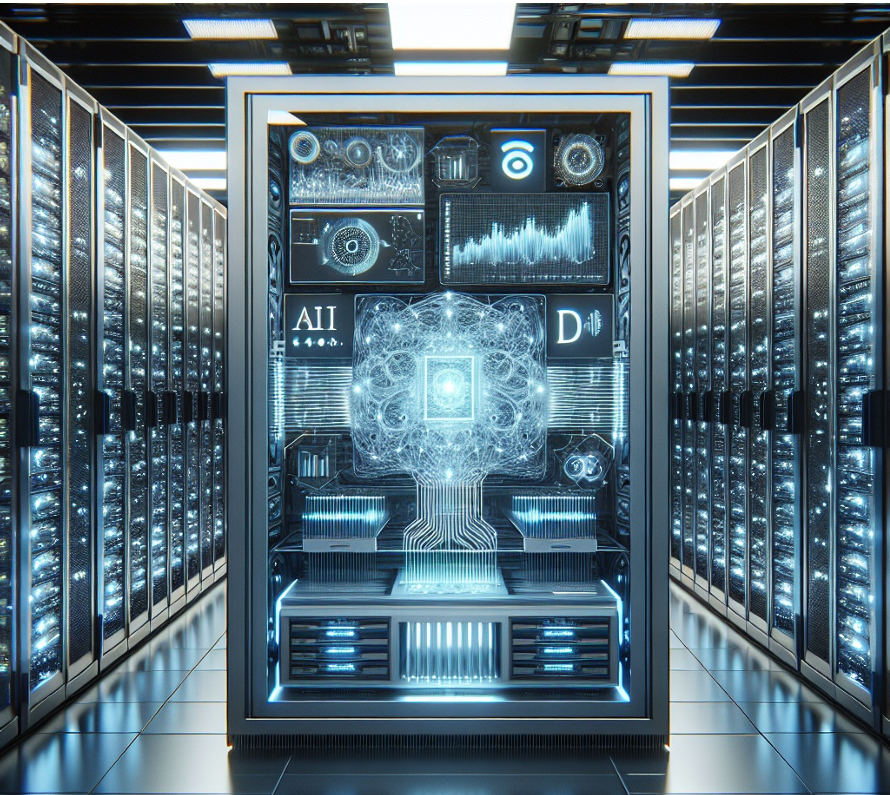The Integration of GenAI and AIML in Mainframe Systems: Enhancing Functionality and Productivity
In today’s rapidly evolving technological landscape, artificial intelligence (AI) and machine learning (ML) are revolutionizing various industries. Mainframes, known for their reliability and power in handling massive data volumes, are also embracing this transformation. By integrating AI and ML, particularly GenAI (Generative AI) and AIML (AI and Machine Learning), mainframes are experiencing a significant boost in functionality and productivity.

Understanding Mainframes
Before diving into the world of AI-powered mainframes, let’s understand the fundamentals of these systems: — Mainframes are large, powerful computers used predominantly by large organizations for critical applications. — They are ideal for bulk data processing tasks such as census, industry and consumer statistics, enterprise resource planning (ERP), and transaction processing. — Mainframes are valued for their reliability, scalability, and efficiency in managing immense data volumes.
Introducing AI and ML to Mainframes
The advent of AI and ML brings a transformative edge to mainframe capabilities: — AI simulates human intelligence processes via computers. — ML, a subset of AI, enables systems to learn and improve from experience without needing explicit programming. — GenAI focuses on generating new content like text, images, or code using existing data. — AIML encompasses a broader range of AI and ML techniques applied to mainframe systems.
Key Benefits of AI and ML in Mainframes
Enhanced Analysis and Decision-Making:
- AI-powered mainframes can perform sophisticated data analysis, such as real-time fraud detection.
- By analyzing transaction patterns, AI can identify anomalies and minimize financial risks for businesses.
Improved Security:
- AI optimizes security settings by evaluating large security data volumes swiftly.
- Identifying threats before they materialize is crucial for protecting sensitive enterprise data.
Operational Efficiency:
- AI optimizes system configurations, ensuring mainframes operate with maximum efficiency.
- Tools like chatbots automate support functions allowing IT staff to concentrate on strategic tasks, leading to cost savings.
Hybrid-Cloud Strategies:
- Traditionally on-premises, mainframes now support hybrid-cloud strategies combining on-premise and cloud benefits.
- AI streamlines integration, promotes data exchange, and guarantees robust performance across platforms.
Real-world Impact: IBM’s Approach
IBM, a leader in mainframe technology, exemplifies AI integration in this realm: — By incorporating sophisticated AI capabilities into their mainframe infrastructure, IBM enables businesses to analyze transaction anomalies. — Establishing transaction credibility using public data enhances transparency and strengthens trust in business operations.
Future Prospects
The future of AI and ML in mainframes is promising: — We can expect greater integration, offering more detailed insights, enhanced automation, and unprecedented efficiency. — Potential advancements include predictive maintenance, personalized customer experiences, and advanced analytics. — These developments pave the way for innovative solutions across various industries.
Conclusion
Integrating GenAI and AIML into mainframes signals a pivotal advancement in enhancing their functionality and productivity: — By harnessing AI, mainframes not only improve their traditional roles but also open new avenues for innovation and growth. — As businesses continue to push technological boundaries, AI-enhanced mainframes will remain at the forefront of data-driven decision-making. — With ongoing advancements, the possibilities are limitless, promising a more intelligent, efficient, and productive technological future.
#AI #MachineLearning #Mainframes #GenAI #Innovation #BigData
For detailed insights, please visit my blog at:
https://ajayverma23.blogspot.com/
Explore more of my articles on Medium at:
https://medium.com/@ajayverma23
Connect with me:
https://www.linkedin.com/in/ajay-verma-1982b97/

Comments
Post a Comment